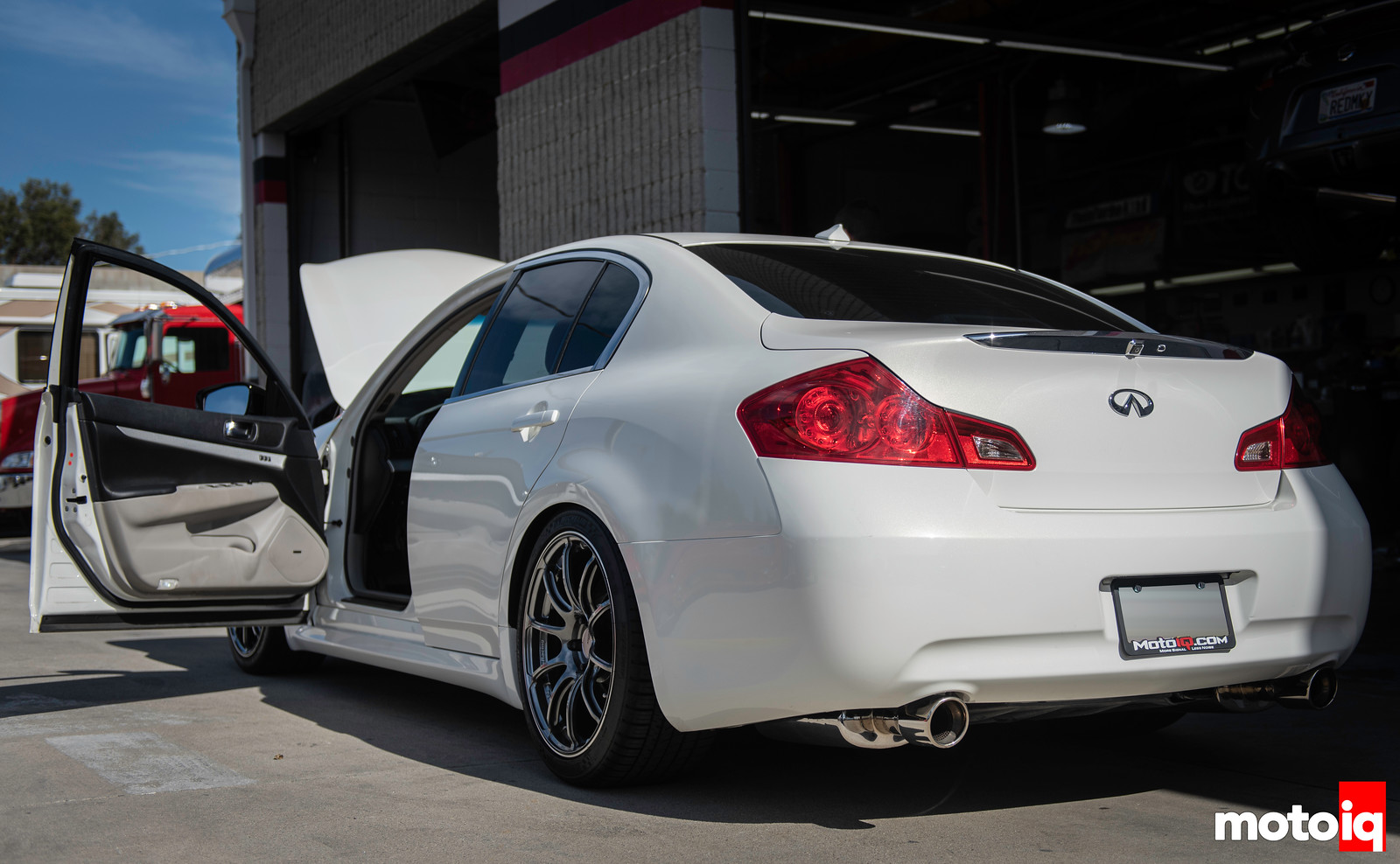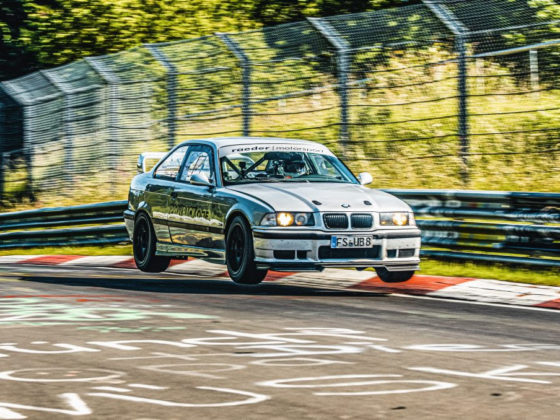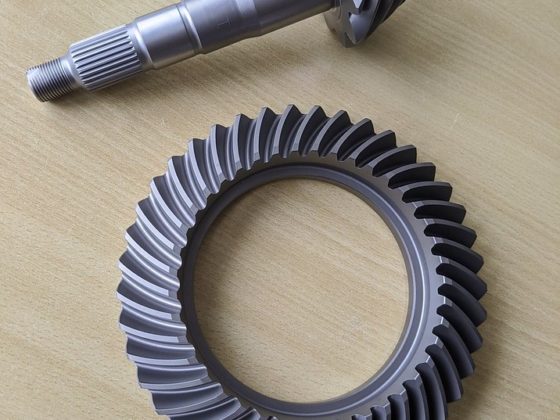G37 Supercharger Tuning

With the car on the dyno and a base map added it was time for a couple of easy low load pulls. Sebastian had a nice set of headphones on not to listen to music while he tuned but to listen for detonation. He’s checking to see if the factory knock sensors are reading false positives or if he’s also hearing knock. ‘Every car is different’ he said ‘some cars pull a lot of timing with false positives.’
Sebastian went on to explain that tuning these VQ37VHR’s for forced induction off the readings from the MAF’s is tough because of all the turbulence in the intake tract. He said some of the air/fuel ratio data provided by the factory MAF’s is skewed by this turbulence and he’s ‘learned what to ignore’ and move on. We’re lucky that we have an experienced wrench like Howard perform our install. Sebastian asked who did the work to ensure the car was solid before proceeding with the car on the dyno. This is a good time for a shameless plug for the MotoIQ garage services.

On the dyno
It was an exciting moment; our car was making solid power on pump gas and finally able to move under its own power again. Not being satisfied, Sebastian kept at it until he reached 441.99 hp and 350.94 tq at 6620 RPM. At this point he asked if I was okay stopping there. He also pointed out that if we wanted another 60-70hp we could take off the air filter and install a turbo guard. We preferred to keep the engine better protected with the air filter in place and will solution better air filter breathing down the road.

Racemaps
Next steps were our race gas maps. Instead of messing around with expensive high octane fuel we opted to raise the octane with some Boostane. We’ve read good things about it and it was also recommended by Specialty Z as a real octane booster. We mixed enough boostane to achieve 100 octane with the fuel we had in the tank. The results for our 100 octane map were 483.96hp and 378.15 tq at 6790 RPM. That ought to be enough to turn our tires into dust! Finally, Sebastian dialed things down a notch for a 98 octane map at 467.66 hp and 369.38 tq at 6800 RPM.

Only in the era of 490 hp Corvette’s and 700 hp Dodges could you be slightly sad about making 441 hp to the wheels on pump gas. That’s still 508 crank horsepower with a calculated 15% drivetrain loss. Sebastian asked what kind of gas we had in the car and we use Chevron mostly. His experience is that Chevron is a great detergent gas but that he has the most consistent results fighting detonation using Shell fuel.




4 comments
It seems like a simple 90* or cobra 90* to a giant air filter makes the most sense for the blower. When I saw that filter in the earlier build articles I shook my head immediately, the actual filter area is like an inch wide, it’d be great for a lawnmower. It is weird that the descendant of SCC didn’t just laugh at the filter and get a good one before tuning, it seems like such an obvious bottleneck.
I’ve seen 3 different Air-to-Air setups that build upon Stillen’s supercharger system like this. All of them use this short filter if they run a filter. The blower guard will of course make great numbers but I’m not sure it’s worth the risk of having an object sucked through the inlet and destroying a $2,700 supercharger.
Stillen has an interesting looking hose that necks down from the 3.5″ inlet on the supercharger to what appears to be either 2.5-3″. It also hooks up to their bypass assembly which we don’t need. All 3 of the Air-to-Air setups abandon this intake. I’m sure one of the reasons is having a short intake run like this makes more boost. You are right though the actual filter area is small but there is the top media element in addition to what’s on the side. A lot of the mustang guys who run these setups have the same issue as well.
I think the cobra 90 is probably our only option without some major fabrication work.
Just clean it often since dust will migrate through it quickly.
The clearance is so tight for that air filter, the blower assembly has to be removed to remove the filter.